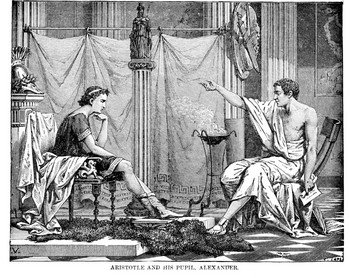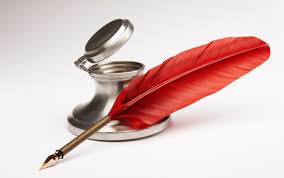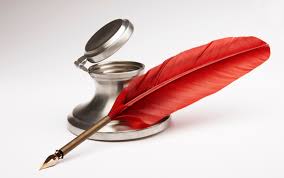Rhetoric is effective and/or persuasive writing or speaking, and figures of speech are one of the components of rhetoric. Both readers of and speakers of the English language enjoy encountering figures of speech, which can be clever, humorous, biting, visual — intriguing or memorable in some way. Thus writers who can employ figures of speech are more likely to win over their audience.
Because the ancient Greeks valued and taught rhetoric, most figures of speech have names that come from the Greek. I have to confess that I can use a figure of speech, knowing I have used it, without being able to remember its name.

Some sources state that anaphora [a NAPH o ra] is probably the oldest literary device of all. Anaphora is the repetition of a word or phrase at the beginning of successive clauses, and it has been used extensively by writers and speakers of all kinds. Walt Whitman used anaphora, as did Martin Luther King, Jr.
Here’s a well-known example, from Winston Churchill’s most famous World War II speech: “We shall not flag or fail. We shall go on to the end. We shall fight in France, we shall fight on the seas and oceans, we shall fight with growing confidence and growing strength in the air, we shall defend our island, whatever the cost may be, we shall fight on the beaches, we shall fight on the landing grounds, we shall fight in the fields and in the streets, we shall fight in the hills. We shall never surrender.”
Then there’s antanaclasis [ANT an a CLASS is], in which a word is repeated in the same grammatical form (verb, for example, or adjective), but with two different meanings or senses. An example is the quote attributed to Benjamin Franklin: “We must, indeed, all hang together, or, most assuredly, we shall all hang separately.” In both cases hang is a verb, but in its first use it means to consort with, and in its second use it means to be suspended by the neck until dead.
 You can infer the importance of repetiton, both to the Greeks and to ourselves, when you consider how often repetition is part of a literary device. There’s anaphora, there’s antanaclasis, and there’s ploce [PLO see], which is the repetition of a word, often with intervening words between, and usually the second use of the word has a different meaning than does the first use of the word. “When the going gets tough, the tough get going.”
You can infer the importance of repetiton, both to the Greeks and to ourselves, when you consider how often repetition is part of a literary device. There’s anaphora, there’s antanaclasis, and there’s ploce [PLO see], which is the repetition of a word, often with intervening words between, and usually the second use of the word has a different meaning than does the first use of the word. “When the going gets tough, the tough get going.”
 Metonymy [meh TON eh me] replaces the name of something with a word that is closely associated with the first thing. For example, when Christina Rossetti wrote “Never on this side of the grave again,” she was replacing the word death with something associated with death: the grave. In “The pen is mightier than the sword,” pen is being used instead of written words, and sword is being used instead of military force.
Metonymy [meh TON eh me] replaces the name of something with a word that is closely associated with the first thing. For example, when Christina Rossetti wrote “Never on this side of the grave again,” she was replacing the word death with something associated with death: the grave. In “The pen is mightier than the sword,” pen is being used instead of written words, and sword is being used instead of military force.
Metonymy is so much a part of our spoken and written language that we’re often unaware that we’re using a figure of speech.
Synecdoche [sin EK do kee] is a special form of metonymy in which a part is used to represent the whole. An example of synecdoche from everyday usage is calling workers hands — the hand is just part of a human being, but it is used to stand for the whole person. Likewise, calling a very intelligent person a brain is an example of synecdoche.
And now, by your leave, I’ll leave you alone.
——————————————
Barbara Gregorich employs figures of speech in her poems, published in Crossing the Skyway.


5 responses to “Five Figures of Speech”
Barbara, thank you very much for this interesting and instructive post. I think it’s an excellent idea to either introduce or review these figures of speech.
LikeLiked by 1 person
The writing class I teach had a lot of fun using two of these figures of speech.
LikeLike
“Gott seid danke” you never taught English at Midpark High School in the late ’60s! Barbara, great stuff. T.Y.S.M.
LikeLiked by 1 person
I think it would be harder to spell the names correctly than to remember them!
LikeLike
Loved this. It’s always nice to know the etiology of things.
LikeLiked by 1 person